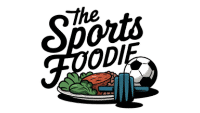Could intermittent fasting work for your training routine? Many active individuals are curious about this nutrition strategy. Research shows it may help with body composition—keeping muscle while losing fat—without hurting performance.
Top performers like NFL star Ndamukong Suh have used it successfully. But it’s not a magic fix. The approach has pros and cons, depending on your sport, intensity, and goals.
This guide breaks down the science, benefits, and potential challenges. You’ll learn how to tailor it for your needs—because one size rarely fits all in fitness.
What Is Intermittent Fasting?
Timed eating patterns have gained traction among fitness enthusiasts. Unlike diets that restrict calories, this approach focuses on when you eat. It cycles between eating and fasting periods to sync with your body’s natural rhythms.

Popular Methods
The 16:8 method is the most common. You fast for 16 hours and eat within an 8-hour window. For example, meals might run from noon to 8 PM. This suits many active lifestyles because it aligns with sleep and training schedules.
Adjustments for Active Individuals
Competitors often tweak the standard approach. Longer feeding windows help during heavy training. Protein intake becomes critical to preserve muscle. Studies of Ramadan fasting show performance stays steady with proper hydration and nutrient timing.
| General Approach | Athlete Adaptations |
|---|---|
| 16-hour fast | 12–14-hour fast during intense cycles |
| Flexible meal timing | Protein-rich meals post-workout |
| No food restrictions | Strategic carb loading for endurance |
Endurance and strength sports need different strategies. Marathoners may prioritize carbs before long runs. Powerlifters often focus on protein timing. Avoid long fasts before high-intensity sessions to maintain energy.
How Intermittent Fasting Affects Athletic Performance
Research reveals surprising effects of eating schedules on physical output. Whether you’re a runner or lifter, meal timing alters how your body fuels effort. Let’s break down the science.

Impact on Aerobic and Anaerobic Capacity
A 2021 study found runners maintained VO2 max despite fasting. Their bodies adapted to burn fat efficiently—a win for marathoners. But glycogen stores drop faster during endurance events. Plan carb-heavy meals before long sessions.
For HIIT or sprints, early fasting phases may dampen performance. One trial showed 7% slower repeats until athletes adapted. The fix? Save carbs for high-intensity bursts.
Effects on Strength and Power Output
Wingate tests prove power stays steady with timed eating. Yet explosive moves like jumps can suffer in a fasted state. Cyclists posted equal time trial results, but weightlifters noted slower recovery.
Timing matters. Evening workouts outperform fasted morning sessions for strength. Need max effort? Sync meals with training windows.
- Gradual wins: Start with 12-hour fasts in off-seasons.
- Hydrate smart: Electrolytes curb energy crashes.
- Listen to your body: Dips fade as metabolism adjusts.
| Activity Type | Fasting Impact | Adaptation Tip |
|---|---|---|
| Endurance | Stable aerobic capacity | Pre-load carbs pre-race |
| Sprints/HIIT | Early power drop | Train post-meal |
| Strength | Slower recovery | Prioritize protein post-lift |
Benefits of Intermittent Fasting for Athletes
Active individuals exploring nutrition strategies often see measurable benefits from structured eating. Research shows it’s not just about weight—it’s about optimizing health and performance.
Improved Body Composition and Fat Loss
A 14-week study found active women lost 4% body fat while keeping lean mass. Timed eating helps burn fat without extreme diets. Autophagy—your body’s cleanup process—kicks in during fasting windows, aiding recovery.
Maintenance of Muscle Mass
Resistance-trained males preserved muscle mass even in a calorie deficit. Key tactics:
- Consume 30g protein post-workout.
- Try HMB supplements during cuts.
- Pair carbs with protein for recovery.
Potential Boost in Growth Hormones
Fasting spikes growth hormone by 1,300%, aiding muscle repair. Evening fasts align with natural hormone cycles. This may explain why some athletes feel stronger after adapting.
| Traditional Diet | Structured Eating |
|---|---|
| Steady calorie restriction | Targeted fat loss |
| Muscle loss risk | Better muscle mass retention |
| Fixed meal times | Flexible for training |
Bonus perks: Lower inflammation markers and fewer late-night cravings. Your body becomes a fat-burning machine without sacrificing energy.
Drawbacks of Intermittent Fasting for Athletes
Structured eating isn’t perfect—here’s what to watch for. While many see benefits, 40% of trial participants quit due to difficulty. Let’s break down the challenges and how to tackle them.
Risk of Reduced Energy During Training
Early phases often bring fatigue. Studies show performance drops in the first two weeks as your body adapts. Dizziness or irritability may signal underfueling.
Fix it: Train post-meal or sip electrolytes. Avoid high-intensity sessions fasted.
Challenges in Meeting Caloric and Protein Needs
Shorter eating windows make hitting macros tough. Fitting 150g protein into 8 hours? It’s possible but requires planning.
- Liquid help: Blend oats, peanut butter, and protein powder.
- Snack smart: Nuts, cheese, or Greek yogurt pack calories fast.
Adaptation Period and Performance Dips
Your metabolism needs time to adjust. Glycogen replenishment slows initially, affecting endurance.
| Symptom | Solution |
|---|---|
| Low energy | Carbs pre-workout + BCAAs |
| Hunger spikes | Fiber-rich veggies + fats |
| Social strain | Flexible weekends |
Pro tip: Start with 12-hour fasts for 7 days, then gradually tighten the window. Skip it during competitions.
Intermittent Fasting and Nutrient Timing
Optimizing your meal schedule can make or break your training results. The right nutrition strategy fuels performance, recovery, and muscle growth. Let’s dive into how to sync eating time with your workouts and nail protein intake.
Aligning Eating Windows with Training
Train in the afternoon? Try a 12 PM–8 PM eating window. This gives you hours to refuel post-workout. Morning sessions? Shift meals earlier to avoid fasted fatigue.
Pro tip: Endurance athletes benefit from carb-heavy meal before long runs. Strength trainers should prioritize protein within 1 hour of lifting.
| Training Time | Ideal Eating Window |
|---|---|
| Morning (6 AM) | 7 AM–3 PM |
| Afternoon (2 PM) | 12 PM–8 PM |
Protein Intake Strategies
A 200lb athlete needs ~160g protein daily. Spread it across 4–5 meal to hit 30–40g per serving. Fast-digesting options like whey or eggs post-workout speed recovery.
- Top 5 protein-packed foods: Chicken, Greek yogurt, lentils, salmon, cottage cheese.
- Whey vs. plant protein: Whey absorbs faster (20 mins vs. 60 mins).
- Electrolytes: Add salt to water if training fasted to avoid cramps.
Sample 3-Day Plan:
Day 1: 12 PM (post-workout shake), 3 PM (chicken + rice), 6 PM (salmon + quinoa), 8 PM (casein pudding).
Scientific Evidence on Intermittent Fasting
Science continues to explore how meal timing impacts performance. Recent studies reveal exciting insights—but also gaps in our understanding. Let’s unpack the data together.
What the Studies Show
A 2023 meta-analysis of 25 trials found mixed results. Some athletes saw improved fat loss, while others struggled with energy dips. The effects often depended on sport type and adaptation time.
Key takeaways:
- Animal vs. human data: Mice show faster metabolic adaptation than humans.
- Short-term focus: 80% of trials lasted under 3 months—too brief for long-term conclusions.
- Gender gap: Only 30% of studies included female athletes.
Limitations to Consider
Current research has hurdles. Small sample sizes and inconsistent methods make comparisons tricky. Sponsorship bias (e.g., supplement-funded trials) also clouds some findings.
| Research Type | Strengths | Weaknesses |
|---|---|---|
| Human clinical trials | Real-world data | Short duration |
| Animal studies | Controlled conditions | Limited applicability |
We need sport-specific protocols. A marathoner’s needs differ from a powerlifter’s. Explore more on sports nutrition strategies to tailor your approach.
Intermittent Fasting for Different Sports
Different sports demand unique fueling strategies—here’s how meal timing fits in. A marathoner’s needs differ wildly from a weightlifter’s. Let’s break down the best approaches for your training style.
Endurance vs. Strength: Fueling Contrasts
Endurance athletes thrive on steady energy. Cyclists in a 2022 study maintained race pace with 16:8 fasting by loading carbs pre-ride. Their bodies burned fat efficiently but needed quick sugars during long sessions.
Strength-focused sports prioritize muscle repair. Powerlifters in trials saw varied results—some kept strength, others lagged. The fix? Shorter fasts (12–14 hours) and 40g protein post-lift.
Real-World Adaptations
Tour de France teams use carb-heavy windows before stages. MMA fighters fast briefly to cut weight safely. CrossFit competitors often eat post-workout to balance intensity and recovery.
| Sport Type | Meal Timing | Key Nutrient |
|---|---|---|
| Marathon | Pre-load carbs 3h pre-run | 60% carbs, 20% protein |
| Weightlifting | Protein within 1h post-lift | 30–40g protein/meal |
| Rugby | Extended feeding windows | Electrolytes + carbs |
Pro tips:
- Swimmers: Eat 2h before morning practice to avoid cramps.
- Bodybuilders: Avoid long fasts during contest prep to prevent muscle loss.
- Triathletes: Sip BCAA drinks during fasted bricks.
Practical Tips for Implementing Intermittent Fasting
Ready to try a new fueling strategy? These practical steps make the transition smooth. Whether you’re prepping for a marathon or lifting heavy, proper execution matters more than perfect timing.
Gradual Adoption and Monitoring
Jumping straight into long fasts risks energy crashes. Instead, follow this 4-phase plan:
- Days 1-7: 12-hour overnight fast (8 PM–8 AM)
- Weeks 2-3: 14-hour fast with protein post-training
- Week 4: 16-hour fast, adjusting workout times
- Ongoing: Fine-tune based on energy levels
Track these metrics daily:
- Morning weight (same scale/time)
- Energy during peak training hours
- Sleep quality (use apps like WHOOP)
| Phase | Fasting Hours | Training Adjustments |
|---|---|---|
| 1 | 12 | Normal routine |
| 2 | 14 | Reduce morning intensity |
| 3 | 16 | Schedule HIIT post-meal |
Hydration and Supplementation
Electrolytes are your secret weapon. Mix sodium, potassium, and magnesium into water—especially during long training sessions. Aim for 16 oz upon waking.
Caffeine timing: Drink coffee 30 minutes before workouts to boost fat burning. Limit intake after 2 PM to avoid sleep disruption.
| Supplement | Timing | Dosage |
|---|---|---|
| BCAAs | During fasted workouts | 5-10g |
| Electrolytes | Pre/post-session | 500mg sodium |
Travel tip: Pack protein bars and nuts for flights. At social events, eat protein first to control hunger. If you feel dizzy or weak for 3+ days, pause and reassess.
Common Myths About Intermittent Fasting
Confusion swirls around timed eating—let’s clear the air. Many people believe myths that can hurt their progress. We’ll tackle the top questions with science-backed answers.
Debunking Misconceptions
Myth: “Skipping meals triggers starvation mode.”
Truth: Your metabolism won’t crash. Studies show fat burning increases for 48+ hours (Source 1).
Myth: “You’ll lose muscle automatically.”
Truth: With enough protein, lifters kept mass in trials. Aim for 0.8g per pound daily.
Separating Facts from Hype
Gender differences matter. Women may need shorter fasts due to hormone sensitivity. Listen to your body.
Detox claims? Your liver handles toxins—no need for “cleanses.” Save money on fancy supplements.
| Myth | Fact |
|---|---|
| “Breakfast is a must” | Meal timing is flexible—eat when it suits you. |
| “Religious fasting = same diet” | Ramadan focuses on spirituality, not body comp. |
| “Influencers know best” | Check credentials—many profit from false claims. |
Key takeaways:
– Fasting isn’t undereating. Meet calorie needs.
– Hormones like insulin adapt, but won’t “break.”
– Try it for reasons that fit your goals—not trends.
Who Should Avoid Intermittent Fasting?
Not everyone thrives with restricted eating windows—here’s who should reconsider. While timed nutrition works for many, certain groups face higher risk or stalled progress. Your health and training demands matter most.
High-Intensity Athletes with Elevated Caloric Needs
Endurance or strength athletes burning 3,000+ daily calories may struggle. A study showed a 22% energy deficit in some cases. Signs you’re underfueling:
- Frequent dizziness during workouts
- Slower recovery between sessions
- Unplanned weight loss (>2lbs/week)
Fix it: Extend eating windows or add calorie-dense shakes (oats, nut butter, protein).
Individuals with Specific Health Conditions
Some conditions require steady fuel. Absolute no-gos include:
- Pregnancy/breastfeeding: Nutrient needs spike—avoid deficits.
- Diabetes: Blood sugar swings demand careful monitoring.
- Thyroid disorders: Fasting may worsen hormone imbalances.
| Red Flag | Alternative Approach |
|---|---|
| History of disordered eating | Regular meals + therapist support |
| Teen athletes | Focus on growth, not restriction |
Pro tip: Get a health screening first. If you feel worse after 2 weeks, stop and reassess.
Conclusion
Timed nutrition offers clear benefits like fat loss and muscle retention. But it’s not one-size-fits-all. Your sport, goals, and body respond uniquely.
Pros shine—better body comp, efficient recovery. Yet drawbacks like energy dips remind us: adaptation takes patience. Track your performance metrics closely.
Start slow. Try 12-hour fasts first. Adjust based on energy and results. Always prioritize protein and hydration.
Consult a dietitian if you’re unsure. Sustainable habits beat short-term fixes. Ready to experiment? Your body holds the answers.


